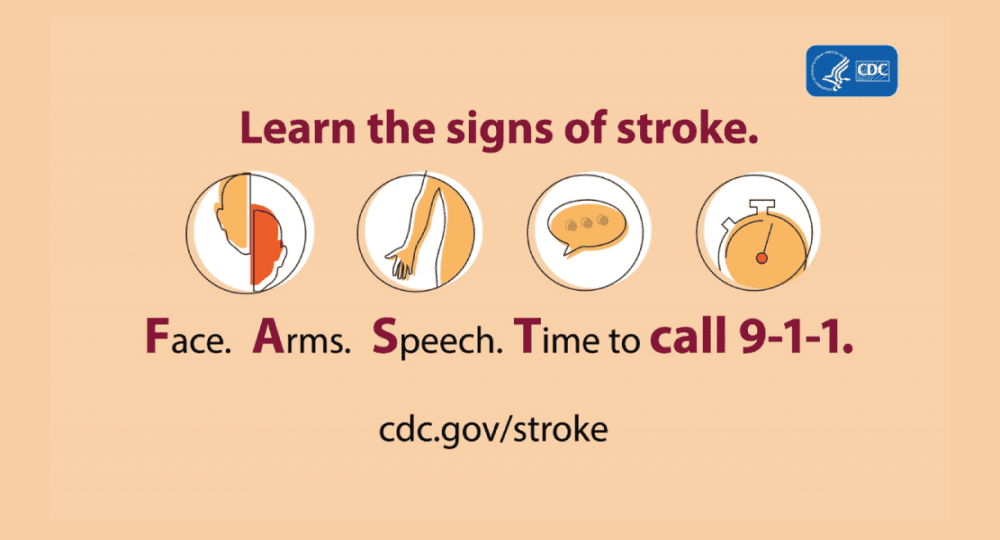Each year approximately 150,000 Americans die as the result of a stroke. Happening in one of two ways, a stroke occurs when blood being supplied to the brain is blocked (Ischemic stroke) or when blood vessels burst in the brain (Hemorrhagic stroke). When a stroke occurs, brain tissue atrophies, leading to disability, brain damage, death. The vast majority of strokes are considered preventable.
Prevent stroke by reducing your risk through lifestyle changes that help control blood pressure and cholesterol. Stroke risk factors include:
- Previous stroke
- Smoking
- Excessive alcohol intake
- Lack of exercise
The CDC (Center for Disease Control) suggests the F.A.S.T. acronym for identifying the signs and symptoms of stroke:
F = Face drooping: Ask the person to smile. Does one side droop?
A = Arm weakness: Ask the person to raise both arms. Does one arm drift downward?
S = Speech difficulty: Ask the person to repeat a simple sentence. Are the words slurred?
T = Time to call 9-1-1: If the person shows any of these signs, call 9-1-1 immediately.
Other signs that may indicate you are experiencing a stroke include sudden onset of:
- Dizziness, difficulty walking, loss of balance/coordination
- Difficulty seeing in one or both eyes.
- Severe headache
- Numbness or tingling in the face, arm or leg
- Confusion or understanding
For the best outcome from a stroke, call 911 to be taken immediately to the hospital. Do not let concerns about COVID-19 keep you from seeking related medical care. Delaying treatment may prolong or even prevent what otherwise could be a full recovery.
More information can found on the CDC website.
—
Resources:
Graphic courtesy of the CDC





